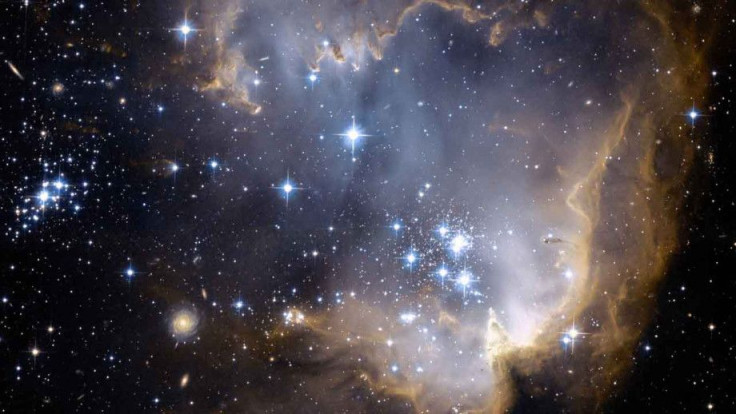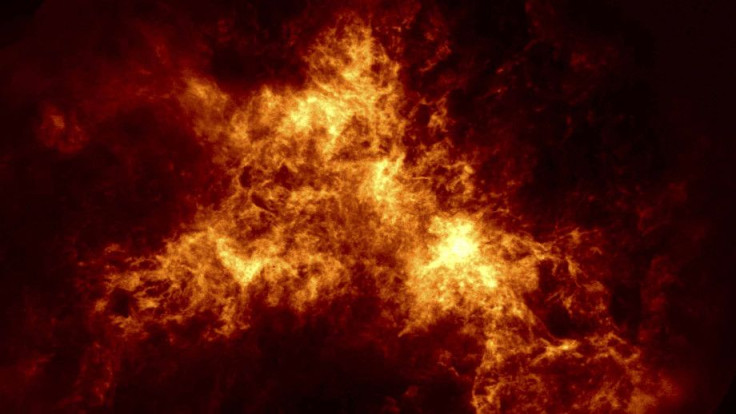Doomed Galaxy: Astronomers Take Image Of Star Cloud To See Its Fate

Astronomers are sharing what they say is the most detailed image a radio telescope has ever taken of a small galaxy near the Milky Way.
The Small Magellanic Cloud is a dwarf galaxy, with only a fraction of the number of stars our own galaxy contains, that is one of our closest neighbors. Scientists using a new radio telescope in Australia say they have taken the most detailed radio image of this dwarf galaxy, and it could tell them more about how it has evolved over its lifetime and where it is going in the future. That’s because among the details they could see was the hydrogen gas at the Small Magellanic Cloud’s edges.
“These features are more than three times smaller than we were able to see before and allow us to probe the detailed interaction of the small galaxy and its environment,” researcher Naomi McClure-Griffiths said in a statement from Australian National University. “Hydrogen is the fundamental building block of all galaxies and shows off the more extended structure of a galaxy than its stars and dust.”

Although there have been detailed infrared images from this pocket in space, radio telescopes pick up different details because they detect light on a different part of the spectrum.
The Small Magellanic Cloud has formed in part through its interactions with the Milky Way and with what ANU calls its “companion,” a larger dwarf galaxy called the Large Magellanic Cloud. The two irregularly shaped “cloud” galaxies are connected to each other by the gas and material that goes between them and orbit both each other and the Milky Way.
“The outlook for this dwarf galaxy is not good, as it’s likely to eventually be gobbled up by our Milky Way,” McClure-Griffiths said.
People in Earth’s Southern Hemisphere can see the Small Magellanic Cloud with their naked eye on a clear night. It is about 200,000 light years away from us and contains a few billion stars.
© Copyright IBTimes 2024. All rights reserved.



















